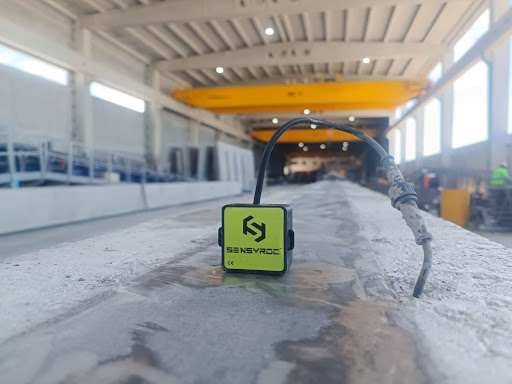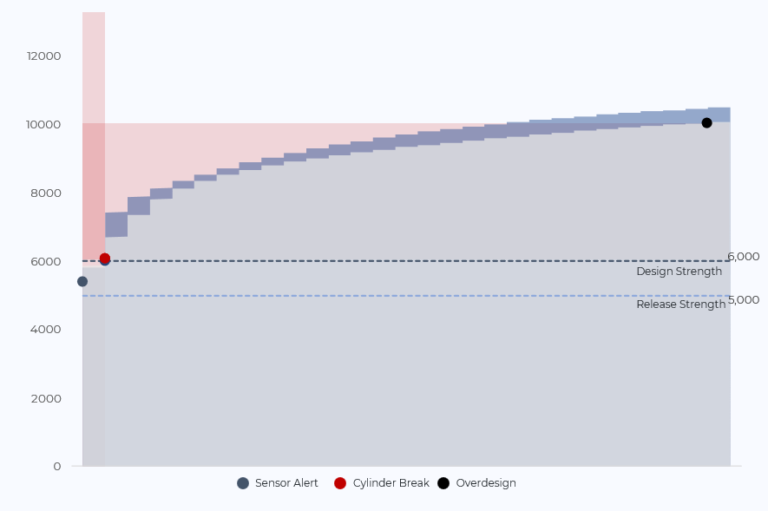Enhancing Quality Control in Precast Concrete: Insights from Sensytec’s Advanced Sensing Technology
Developer
July 3, 2024

The Need for Sustainability in Construction
The Precast Concrete Industry plays a pivotal role in constructing prefabricated concrete structures such as parking garages, bridges, highways, and tunnels. Unlike traditional onsite building methods, precast construction involves the rapid assembly of critical concrete infrastructure within tight timeframes. However, this industry faces significant challenges related to concrete quality control and waste.
Concrete Overdesign: A Costly Issue
Most concrete structures are intentionally overdesigned to ensure they meet stringent specifications and quality standards. This practice is rooted in caution, as engineers and designers account for potential variability in material properties, construction practices, and environmental conditions. By adding a safety margin, they aim to prevent structural failures and ensure durability.
However, in the context of precast plants, overdesign becomes a costly problem when applied uniformly to every concrete element produced. Each additional percentage of overdesign translates into unnecessary material use, particularly of Portland cement, which is both costly and environmentally taxing due to its carbon footprint. The cumulative effect of this practice across large-scale projects can lead to significant financial waste and resource inefficiency.
Sensytec’s data analysis reveals that many precast plants using SensyRoc sensors exhibit a pattern of higher-than-anticipated overdesign. This is often due to conservative practices and the lack of precise, real-time data on concrete performance. Without accurate insights, precast manufacturers rely on broad safety margins, leading to more material being used than actually needed for structural integrity.
By embedding SensyRoc sensors, precast plants can collect real-time data on the curing process and the development of concrete strength. This data allows for precise adjustments to the mix and curing conditions, ensuring that each element meets the required specifications without excessive overdesign. Consequently, plants can significantly reduce material costs and improve sustainability by minimizing unnecessary cement use while maintaining high-quality standards.
The Surprising Reality

Precasters often assume an average 10-20% overdesign across all concrete mixes. However, our data shows that the actual overdesign far surpasses their expectations. SensyRoc sensors provide real-time insights, revealing that compressive strength benchmarks are often met days or even hours before anticipated.
SensyRoc Sensors: Revolutionizing Quality Control for The Precast Industry
By directly installing SensyRoc sensors into concrete elements, precast clients can closely monitor quality throughout the entire curing process. These embedded sensors provide accurate, real-time data on concrete performance, such as temperature, electrical resistivity, and compressive strength. This continuous monitoring allows precast plants to make informed adjustments on the fly, ensuring that the concrete cures under optimal conditions.
Real-time data reporting means that any deviations from expected performance can be immediately addressed, reducing the need for excessive overdesign. For instance, if the data shows that the concrete is reaching its required strength faster than anticipated, production schedules can be adjusted accordingly. This precision reduces the reliance on broad safety margins, which are typically incorporated to account for uncertainties in traditional methods.
The implications of this technology are significant. By optimizing the curing process and reducing overdesign, SensyRoc sensors help precast plants use less Portland cement without compromising the quality or safety of the concrete elements. This not only cuts material costs but also reduces the environmental impact of cement production, which is a major contributor to carbon emissions.
Conclusion
In summary, SensyRoc sensors provide a technological edge that enhances quality control, lowers production costs, and supports sustainable construction practices. Precast plants can produce high-quality concrete elements more efficiently, contributing to faster project completion times and improved financial outcomes.

